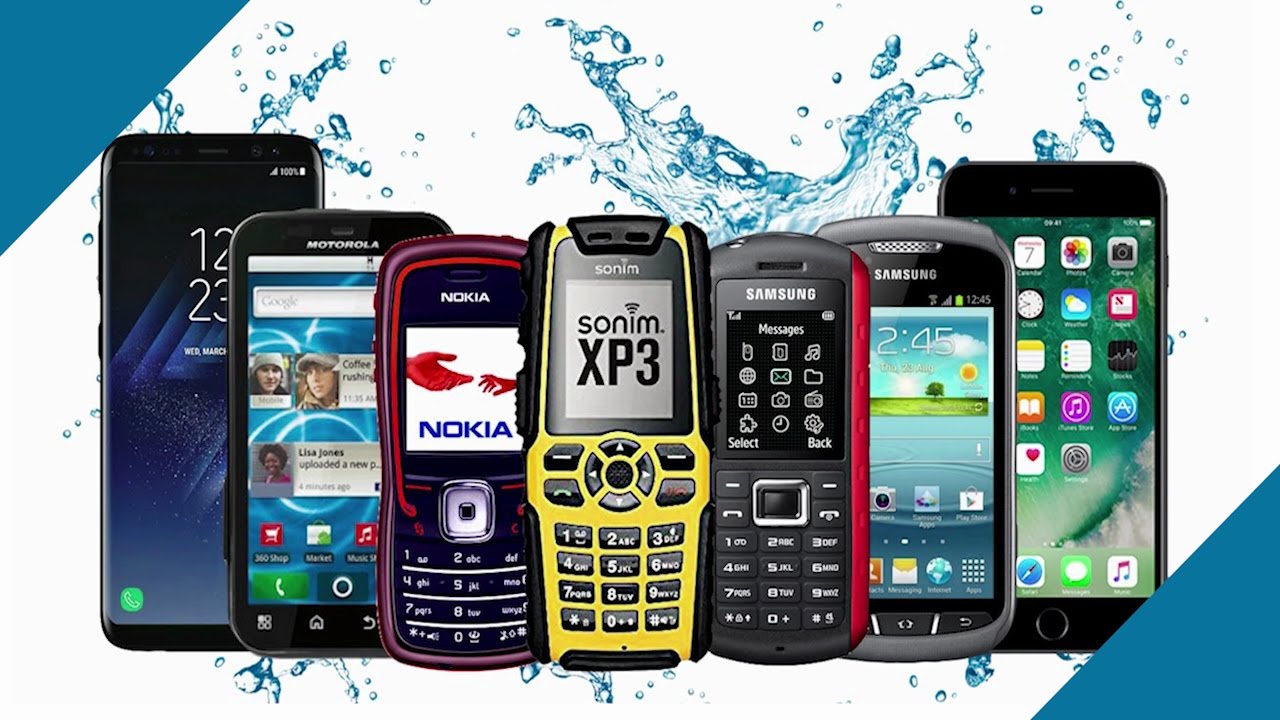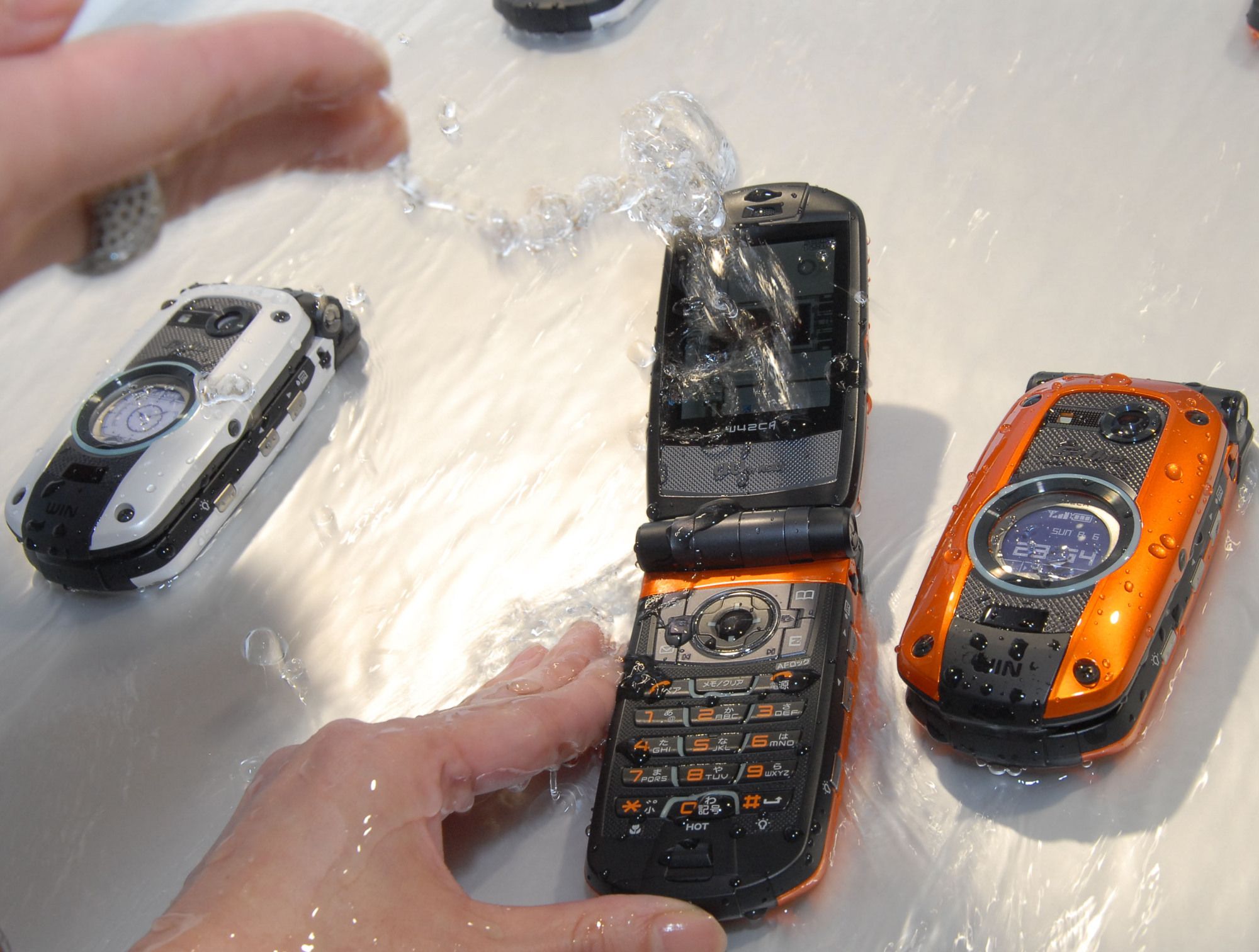Introduction
In today's fast-paced world, smartphones have become an indispensable part of our daily lives. From staying connected with loved ones to managing work on the go, these devices have revolutionized the way we communicate and access information. However, as much as we rely on our smartphones, they are also susceptible to accidental damage, with water being one of the most common culprits.
Water damage to phones has been a persistent issue since the inception of mobile devices. Whether it's a sudden downpour, an accidental drop in the pool, or a spill, water poses a significant threat to the functionality of our beloved gadgets. The consequences of water exposure can range from minor glitches to complete device failure, often leading to costly repairs or replacements.
Recognizing the need for a solution to this widespread problem, tech enthusiasts and manufacturers have been on a quest to develop smartphones that can withstand water exposure without compromising performance. This quest has led to the innovation and production of waterproof phones, a game-changing advancement that has reshaped the smartphone industry.
In this article, we will delve into the intriguing journey of waterproof phones, tracing back to their inception and exploring the impact of this groundbreaking technology. From the early attempts at waterproofing phones to the breakthrough moment when the first waterproof phone was introduced, we will unravel the evolution of this transformative feature and its significance in the realm of mobile technology. Join us as we embark on a captivating exploration of the history, innovation, and evolution of waterproof phones.
The Need for Waterproof Phones
The need for waterproof phones stems from the inherent vulnerability of traditional smartphones to water damage. In our daily lives, we encounter numerous situations where our phones are at risk of exposure to water. Whether it's the unpredictability of weather, the allure of aquatic activities, or the occasional mishap, the threat of water damage looms over our devices. A sudden downpour, an accidental drop in the sink, or a splash at the beach can spell disaster for a non-waterproof phone.
The consequences of water damage to phones can be dire. From malfunctioning buttons and distorted audio to irreversible internal corrosion, the effects of water exposure can render a phone inoperable. The financial implications of water damage are equally concerning, as repairing or replacing a water-damaged phone can be a costly endeavor.
Beyond the inconvenience and financial burden, the loss of data and connectivity due to water damage can disrupt our personal and professional lives. Important contacts, cherished photos, and vital information stored on a phone can be jeopardized in an instant. Moreover, in emergency situations, having a functional phone can be a matter of safety and security, making the reliability of our devices paramount.
The need for waterproof phones is not confined to personal usage; it extends to various industries and professions. From outdoor enthusiasts and adventure seekers to professionals working in demanding environments, the ability to rely on a waterproof phone is invaluable. Whether it's capturing memories during water-based activities, communicating in challenging weather conditions, or ensuring the functionality of devices in rugged settings, the demand for waterproof phones transcends individual preferences.
In essence, the need for waterproof phones is driven by the desire for durability, reliability, and peace of mind. The evolution of smartphones to withstand water exposure addresses these fundamental needs, offering users the confidence to use their devices in diverse scenarios without the constant fear of water damage. This transformative feature has significantly enhanced the resilience and usability of smartphones, catering to the dynamic lifestyles and diverse requirements of users across the globe.
Early Attempts at Waterproofing Phones
In the early stages of mobile phone development, addressing water resistance was not a primary focus. However, as the demand for more durable and resilient devices grew, manufacturers began exploring various methods to protect phones from water damage.
One of the initial approaches to waterproofing phones involved the use of seals and gaskets to create a barrier against water intrusion. These components were strategically placed within the phone's casing to prevent water from seeping into sensitive internal components. While this method showed promise in enhancing water resistance, it was not foolproof and often required meticulous design and assembly to achieve optimal results.
Another early technique involved the application of hydrophobic coatings to the external surfaces of phones. These coatings repelled water, minimizing the likelihood of liquid ingress through the device's openings and ports. While this approach offered a degree of protection against water exposure, it was limited in its effectiveness, especially in scenarios involving prolonged or submersion in water.
Additionally, some early attempts at waterproofing phones focused on incorporating physical barriers, such as water-resistant plugs and covers for ports and slots. These protective features aimed to restrict water entry points, safeguarding the internal circuitry and components from potential damage. While these measures provided a level of defense against water intrusion, they often posed usability challenges and required users to actively engage in securing the phone's vulnerable areas.
As technology advanced, innovative materials and engineering solutions were introduced to enhance the water resistance of phones. The development of specialized adhesives, advanced sealing techniques, and improved materials for phone construction contributed to significant strides in the quest for waterproof devices. These advancements marked a pivotal shift in the approach to waterproofing phones, laying the groundwork for the breakthrough that would redefine the industry.
The early attempts at waterproofing phones reflect the relentless pursuit of technological advancements to address the prevalent issue of water damage. While these initial strategies laid the foundation for future innovations, they also underscored the complexity and challenges associated with achieving robust and reliable waterproofing capabilities in mobile devices.
Through a combination of ingenuity, research, and engineering prowess, the early attempts at waterproofing phones set the stage for the transformative breakthrough that would revolutionize the smartphone landscape.
The Breakthrough: The First Waterproof Phone
The pursuit of a truly waterproof phone reached a defining moment with the introduction of the first commercially available device designed to withstand water exposure. This watershed innovation marked a significant leap forward in the realm of mobile technology, reshaping user expectations and setting a new standard for smartphone durability.
The emergence of the first waterproof phone represented a culmination of extensive research, engineering ingenuity, and a commitment to addressing the pressing need for water-resistant devices. This groundbreaking achievement was not merely a minor enhancement but a transformative leap that redefined the capabilities and resilience of smartphones.
The first waterproof phone, equipped with robust water resistance capabilities, heralded a new era of possibilities for users. It offered a level of protection that went beyond mere splash resistance, empowering users to confidently use their phones in environments and situations previously deemed hazardous for electronic devices. Whether it was capturing underwater memories, using the phone in the rain, or simply having peace of mind in water-prone settings, the advent of the first waterproof phone unlocked a myriad of opportunities for users to integrate their devices into their lives without compromise.
The technological breakthrough that enabled the creation of the first waterproof phone encompassed a multifaceted approach. It involved advancements in materials science, engineering design, and rigorous testing methodologies to ensure the reliability and effectiveness of the device's water-resistant features. From specialized seals and adhesives to innovative enclosure designs, every aspect of the phone was meticulously engineered to repel water and safeguard its internal components.
The introduction of the first waterproof phone not only addressed the immediate need for water-resistant devices but also sparked a paradigm shift in the smartphone industry. It prompted competitors to reevaluate their product strategies and prioritize the integration of water resistance as a standard feature. This shift in focus reflected a fundamental recognition of the evolving needs and expectations of consumers, emphasizing the importance of durability and reliability in mobile devices.
Furthermore, the debut of the first waterproof phone served as a catalyst for ongoing innovation and refinement in the field of water-resistant technology. It inspired continuous advancements in waterproofing methodologies, leading to the development of increasingly resilient and versatile devices capable of withstanding more demanding environmental conditions.
In essence, the introduction of the first waterproof phone represented a pivotal moment in the evolution of smartphones, signaling a departure from conventional fragility towards a new era of resilience and adaptability. This milestone not only transformed the capabilities of mobile devices but also underscored the industry's commitment to addressing real-world challenges and enhancing the user experience.
The breakthrough moment when the first waterproof phone entered the market stands as a testament to human ingenuity, perseverance, and the relentless pursuit of innovation. It laid the foundation for a new standard of durability in smartphones, empowering users to embrace the possibilities of water-resistant technology and embark on adventures without hesitation or fear of water damage.
Impact and Evolution of Waterproof Phones
The introduction of waterproof phones has left an indelible impact on the smartphone industry, reshaping user expectations and driving a significant evolution in the design and functionality of mobile devices. The transformative influence of waterproof phones extends beyond mere water resistance, encompassing a spectrum of implications that have redefined the user experience and the competitive landscape of the market.
Enhanced Durability and Reliability
The advent of waterproof phones marked a paradigm shift in the perception of smartphone durability. It transcended the traditional fragility of electronic devices, empowering users to embrace a more active and adventurous lifestyle without compromising the functionality of their phones. The enhanced durability and reliability offered by waterproof phones have instilled a sense of confidence and peace of mind, allowing users to use their devices in diverse environments and weather conditions.
Expanded Possibilities for Users
Waterproof phones have expanded the horizons of smartphone usage, unlocking a myriad of possibilities for users. From capturing underwater moments to using the phone in the rain or snow, the water-resistant capabilities have liberated users from the constraints of conventional smartphones. This expanded versatility has enriched the user experience, enabling individuals to seamlessly integrate their devices into various aspects of their lives, be it during outdoor activities, travel, or everyday routines.
Industry-Wide Embrace of Water Resistance
The introduction of waterproof phones catalyzed a widespread embrace of water resistance as a standard feature in the smartphone industry. Competitors quickly recognized the shifting consumer preferences and the growing demand for durable devices, prompting a collective reevaluation of product strategies. This industry-wide shift underscored the significance of water resistance as an essential attribute, leading to the integration of waterproofing technologies across a broad spectrum of smartphone models.
Ongoing Innovation and Advancements
The evolution of waterproof phones has been characterized by continuous innovation and advancements in water-resistant technology. Manufacturers have invested in research and development to enhance the resilience and effectiveness of waterproofing methodologies, resulting in the creation of increasingly robust and versatile devices. These ongoing efforts have propelled the evolution of waterproof phones, enabling them to withstand more demanding environmental conditions and offering users a greater degree of confidence in the durability of their devices.
Empowerment of Diverse User Scenarios
Waterproof phones have empowered users across diverse scenarios and professions, transcending individual preferences to cater to a wide spectrum of needs. From outdoor enthusiasts and adventure seekers to professionals working in challenging environments, the reliability of waterproof phones has proven invaluable. This empowerment has extended beyond personal usage, encompassing various industries and activities where the resilience of smartphones is a critical factor.
In essence, the impact and evolution of waterproof phones have redefined the capabilities, expectations, and possibilities associated with mobile devices. This transformative journey has not only enhanced the resilience and adaptability of smartphones but has also reflected the industry's responsiveness to the dynamic needs and aspirations of users. As waterproof phones continue to evolve and innovate, their enduring impact on the smartphone landscape is poised to shape the future of mobile technology, offering users a seamless and resilient digital experience.
Conclusion
The journey of waterproof phones traces a compelling narrative of innovation, resilience, and transformative impact. From the early recognition of the need for water-resistant devices to the breakthrough moment when the first waterproof phone entered the market, this evolution has reshaped the smartphone industry and redefined user expectations. The introduction of waterproof phones has transcended the conventional limitations of smartphone durability, offering users enhanced confidence, versatility, and peace of mind in their daily interactions with technology.
The impact of waterproof phones extends far beyond their water-resistant capabilities. These devices have empowered users to embrace a more active and adventurous lifestyle, integrating their smartphones into a diverse array of environments and activities. Whether it's capturing underwater memories, using the phone in challenging weather conditions, or simply navigating everyday scenarios without the fear of water damage, waterproof phones have expanded the possibilities for users, enriching their digital experiences.
Moreover, the industry-wide embrace of water resistance as a standard feature in smartphones reflects a fundamental shift in the approach to device durability. The relentless pursuit of innovation and advancements in waterproofing technology has propelled the evolution of smartphones, leading to the creation of increasingly resilient and versatile devices capable of withstanding a wide range of environmental challenges.
As we reflect on the journey of waterproof phones, it becomes evident that this transformative feature has not only addressed a prevalent issue but has also resonated with the diverse needs and aspirations of users across the globe. The enduring impact of waterproof phones underscores the industry's commitment to enhancing the user experience, empowering individuals to seamlessly integrate technology into their lives without compromise.
Looking ahead, the evolution of waterproof phones is poised to continue, with ongoing innovation driving the creation of even more robust and adaptable devices. The journey of waterproof phones serves as a testament to the power of human ingenuity and the capacity for technology to transcend limitations, offering users a resilient and immersive digital experience.
In essence, the inception and evolution of waterproof phones have reshaped the smartphone landscape, setting a new standard for durability, reliability, and user empowerment. As we embrace the possibilities of water-resistant technology, the enduring impact of waterproof phones will continue to shape the future of mobile technology, enriching the lives of users and reflecting the industry's unwavering commitment to innovation and resilience.

























